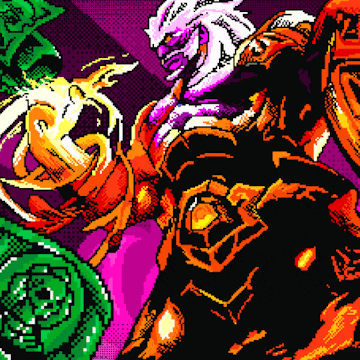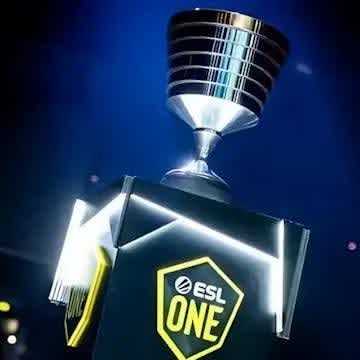IEM Rio: the great games are saving a mediocre Major so far
A controversial crowd, the many tech issues, the observer BSODs and the usual delays have greatly marred the Challengers Stage experience, but the topsy-turvy games have more than made up for it so far.
Can we please have a Major without tech issues?
Back in my day, FACEIT were rightly ridiculed for the super-long delays in the early stages of their Major. Now it seems like this is baked into the viewing experience, four years down the line. Long tech pauses and impactful mid-round disconnections have been a staple of this Challengers Stage, and it is just not good enough from ESL, even if they at least managed to clear the super-low bar of “be better than the RMR.”
I never understood the whole “it takes a couple of days to sort out a live broadcast” angle that seems to be a recurring theme in esports. You don’t see this at traditional sporting events, the camera doesn’t cut out during the opening games of the World Cup. It all just continues to contribute an amateurish vibe to esports – and there were many similar stories at The International, too –, one that continues to permeate even with all the extra money flowing into the scene.
The IEM Rio crowd has a split personality (and it is super annoying)
Unpopular opinion time: I’m not keen on the crowd at this event. For what it’s worth, I always feel second-hand embarrassment seeing crowd shots at sporting events (and boy did I enjoy the lack of them during the pandemic), so I’m not exactly the target audience of the ooga-booga bonito in the stadium. Your mileage may vary on cartoonish overreactions, but ESL is right to crack down on the non-stop desperate attempts of relaying player positions, not to mention the idiot spouting threats.
Speaking of idiots, there are those who compare all this to football match audiences. Traditional spectator sports are not games of hidden information, unlike CS:GO, where players don’t have built-in X-ray vision available to them. If a viewer shouted out the hidden cards of a poker player (or even the best engine move at a chess event), they would rightly be escorted out of the premises.
Your friendly neighborhood fan relaying intel to their favored players doesn’t make for a better viewing experience for anyone, no matter how cheerful they are about it. This is not just about muh competitive integrity, though that is obviously also affected: it’s just shitty to watch and not what the general CS fan is looking for when they tune in for a big event.
On the topic of amateurishness, the literal amateur casters responsible for the local shoutcasting also make for a jarring experience as a viewer of the English broadcast. While the English casters go crazy over an objectively great play, gaules continues to drone on monotonously in the background, because it wasn’t a Brazilian making the play. Then there’s leading chants in favor of the home teams, which is just… no. To everyone excusing the fan callouts and comparing it to football, can you even try to make a similar comparison here?
If we (rightly) called out Bardolph for this “old boys club” sulking sendoff in Stockholm, how is this any better? Just like the supposedly friendly go-fuck-yourself chants, the language barrier is masking many utterances that are beneath from what you would rightly expect from a large-scale spectator event in a competitive discipline.
There are also the vibes, or lack thereof, when it isn’t a Brazilian team playing. That insane mid-air AK shot by Ax1le will live long in the memory, and there’s a reason why both Machine and SPUNJ went apeshit over it. The crowd? Silent.
Of course, part of this is due to audio mixing, and the crowd noise has been greatly tuned down in the English broadcast from the first day, as any quick comparison with the Brazilian streams will attest to. Congrats to the audio engineer on not being deaf.
Antwerp had a great crowd atmosphere, in large part thanks to the dedicated Vitality fans keeping up their part of the bargain long after their team bowed out. It still remains to be seen how the Rio crowd will act once the last Brazilians are also out of the picture, but I’m not expecting great things based on what we have (not) heard from them so far.
Awesome games and ruined Pick’Ems: the story of the Major so far
IHC and Greyhound joined forces to ruin many Pick’Ems, and it’s clear that Brazil’s golden generation can’t keep up with the competition. If anyone had any doubts, FURIA are the flagship squad of the nation, and the only ones to survive the gauntlet that was the Challengers Stage.
Vitality and Cloud9 were shaky survivors while BNE continued their Cinderella run. They, alongside GamerLegion, show the downsides of the ever-closing third-party circuit. BIG had an easy run so far and got Sprout in their first Legends Stage match to continue that streak of good fortune. OG can be proud of their first Major showing but will no doubt wonder what could have been had they steered clear of tech issues in the match against FURIA.
Huge comebacks, exciting CS:GO matches, cool storylines. The viewing numbers are great and the games have been amazing so far. So we’ve at least got that going for us, which is nice.
IEM Rio Major Legends Stage: what to expect from the opening matches
Even the first round is going to be full of nailbiters with games that are too close to call. Initially, when the current Major system was introduced, the teams from the Challengers Stage had a very good record in the first round against the Legends who were coming in cold: at recent Majors, that hasn’t necessarily been the case.
If we accept the premise that the crowd isn’t actually all that nuts when there are no Brazilians on the stage, and just how battle-hardened some of the top teams are, I’d lean towards the Legends in most of these matchups. Liquid over MOUZ, FaZe over Cloud9, NAVI over Vitality, Heroic over Outsiders, NIP over fnatic: the exceptions in my mind would be BNE against Spirit, BIG versus Sprout and FURIA against ENCE. It’s about to get super spicy.
Photo credit: HLTV






